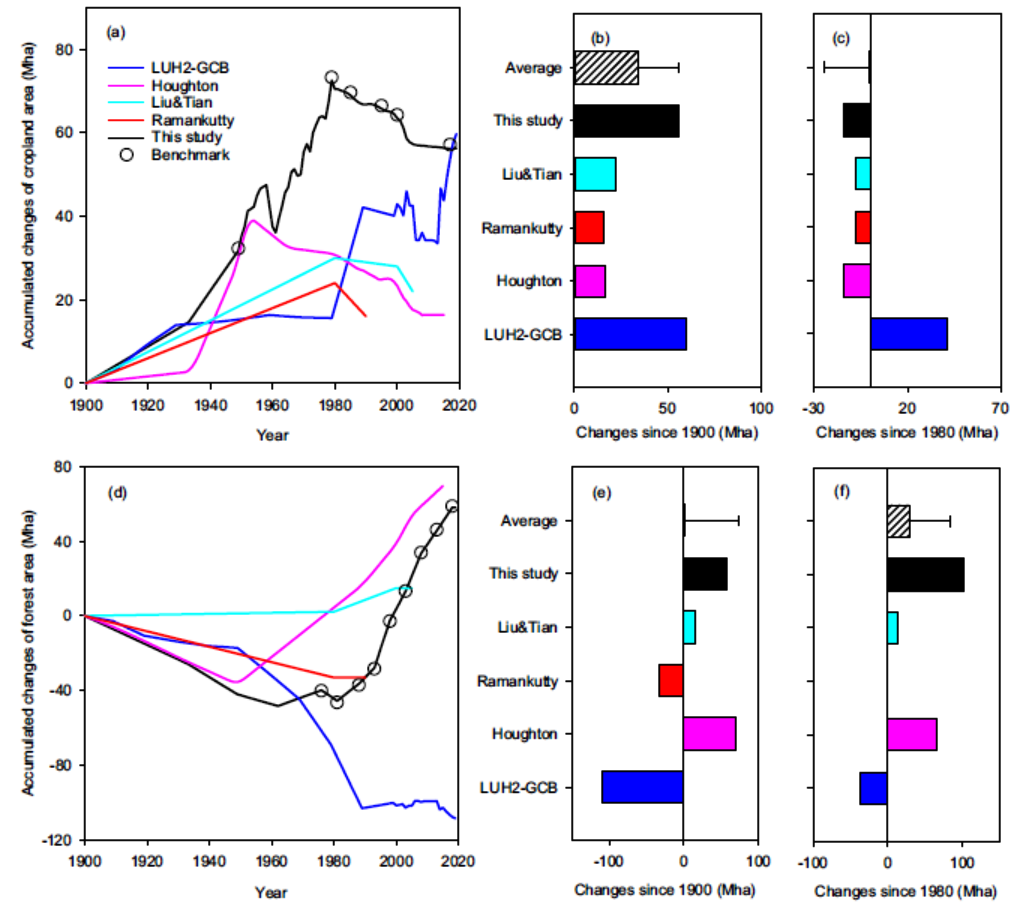Global carbon emissions are approximately 10.2 billion tons per year (about 37.4 billion tons of carbon dioxide per year), making it the primary driver of climate change. Accurately assessing the carbon storage and carbon sink potential of terrestrial ecosystems is crucial for achieving China’s “dual carbon” targets. Based on a comprehensive review of historical data, led by Prof. Liu Shirong, the research team from the Ecology and Nature Conservation Institute, Chinese Academy of Forestry, found significant discrepancies in the Land Use and Cover Change (LUCC) dataset employed by the Food and Agriculture Organization of the United Nations (FAO) for the Chinese region, which led to an overestimation of carbon emissions in the Chinese region. In this study, the researchers reconstructed the land utilization dataset in China since 1900 and used the Dynamic Land Ecosystem Model (DLEM) to re-simulate and reassess China’s historical carbon budget, and thus corrected the biases in LUCC and carbon budget simulation assessment in China.
Using the reconstructed LUCC dataset for carbon budget simulation, it was found that China’s terrestrial ecosystem’s total carbon storage decreased by 6.9 billion tons from 1900 to 1980 but increased by 8.9 billion tons from 1980 to 2019. Comparing 1980 to 1900, the recovery of China’s terrestrial ecosystem carbon reserve not only offset previous carbon emissions but also added an additional 2 billion tons of carbon storage. The results of the study indicate that from 1980 to 2019, the most significant contribution to China’s terrestrial ecosystem carbon sink (approximately 230 million tons of carbon per year) comes from afforestation and forest restoration, accounting for about 44%. This highlights the remarkable achievements of forestry ecological projects in China over the past 40 years and the crucial role of forests in mitigating global climate change. The findings have been published on Nature Communications.

Net temporal change in cropland and forest since 1900
Source: Science and Technology Report 2022 of Chinese Academy of Forestry